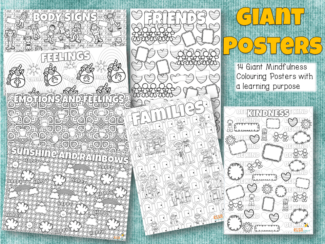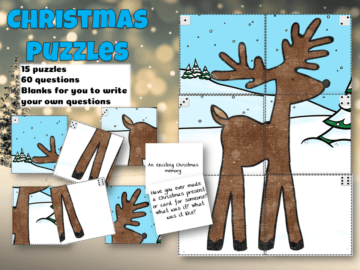Playdough for social and emotional learning

The Amazing Benefits of Play Dough for Social and Emotional Learning
When it comes to learning how to handle emotions and interact with others, play dough is a fantastic tool. It offers lots of advantages for children, like helping them express their feelings, engaging their senses, encouraging creativity, and promoting social skills. Let’s explore the wonderful benefits of using play dough for social and emotional learning.

1. Fun Sensory Experience:
Playing with play dough is not only enjoyable but also stimulates the senses. Children can touch, see, and even smell the dough, which helps them explore different textures, colours, and scents. It’s a great way for kids to understand the world around them through hands-on play.
2. Showing Emotions:
Sometimes it’s hard for children to express how they feel using words. Play dough provides a creative outlet for emotions. Kids can shape the dough to represent different emotions, like happiness, anger, sadness, or excitement. It’s a fun way for them to show and understand their feelings.
3. Relaxation and Control:
Playing with play dough has a calming effect on children. They can squeeze, roll, and shape the dough, which helps reduce stress and anxiety. It also teaches them how to manage their emotions and focus their energy in a positive way.
4. Using Imagination:
Play dough sparks imagination and creativity. Children can mold the dough into anything they can imagine. They can make animals, objects, or even whole scenes. This kind of play boosts their creative thinking and problem-solving skills.
5. Playing Together:
Play dough is great for social interaction. Kids can collaborate and work together on play dough projects. They can share ideas, take turns, and learn how to cooperate. It’s a fun way for them to communicate, understand others, and work as a team.
6. Developing Skills:
Playing with play dough helps improve fine motor skills and hand-eye coordination. Kids practice rolling, cutting, and shaping the dough, which strengthens their hand muscles and improves their control. These skills are important for activities like writing, drawing, and self-care tasks.
7. Staying Focused:
Engaging with play dough encourages mindfulness and concentration. Children can focus on the sensory experience and repetitive actions, helping them stay present in the moment. This helps improve their attention span and self-awareness.
Play dough is an amazing tool for social and emotional learning. It’s a fun and interactive way for children to express emotions, engage their senses, foster creativity, develop social skills, enhance motor skills, and practice mindfulness. By incorporating play dough into learning activities, parents and teachers can provide a valuable learning experience that supports children’s social and emotional development in a simple and enjoyable way.
How can you use Playdough in ELSA sessions? A huge thank you to those that participated and gave their ideas. More minds are always better than one! If you want to join our ELSA group on Facebook then please do!
- I’ve used with younger children on blank face mats for emotions. Make a happy face etc.
- I’ve used with blank face mats with a group. The only remit was make an emotion. After they made it I got others to guess the emotion and then asked the child if they knew why they made that particular emotion and what made them feel like that.
- Use with a combination of smells for stress relief.
- Stress relief, pummelling, tearing, squeezing.
- Family members, alongside the house templates you have on the Elsa website, and reenacting scenarios or telling stories.
- Great to just build things freely so children can chat without feeling need for eye contact.
- Use to illustrate size of a problem in our brains – fits in with how big is your problem ? – can talk about what to do to change the size / manage of problem – mindfulness, positive thinking etc .
- Use a paper plate and bits of playdough to make a mandala patterns.
- We’ve made worry monsters out of playdough, googly eyes are a hit!
- Using different colours to go with different emotions: red for anger/embarrassment, blue for sad/cold, green for disgust/jealous, yellow for happy and so on.
- I have added different smells to enhance mood and asked the children for ideas on colours/smells and to recognise the mood that they induce.
- Add things to the dough for different sensory input? Have a jar and put a piece of pasta in it to signify a feeling of anger. Then as we talk about positive things that happen throughout the day, moments of gratitude the piece of pasta is still there but is surrounded by happier moments and starts to disappear.
- Make long sausages into a maze. Then use drinking straws to blow a ping pong ball through the maze. Practises slow controlled breathing.
- Use to make things that make you feel happy, sad etc, think about what colours would coincide with each emotion.
Make your own safe place, thinking about where, what you can see, what colours are there and you could add scents to think about what smells there would be. Looking at scene pictures (Forrest, beach, park etc) make yourself in playdough (think about how you’re feeling) and place yourself on the picture. Is there anybody else with you? Make them and place them on the picture. Why are you there? What’s happening? A bit like a 3D blob tree! - Build some feelings beads using different colours to represent different feelings.
- Use as a fidget toy so children have something to play with when talking.
- Bury small objects in the playdough for children to find and dig out. Use as a warm up and conversation starter.
- Make a stress ball using playdough inside a balloon and then tie off. Draw a face on the balloon with a permanent marker.
- Make finger prints and then discuss how we are all individual and different.
- Use with two children to illustrate turn taking eg. build a caterpillar and each take in turns to roll a ball.
- Instructions for asking a child to tell you what to do in order to make something.
- As a warm up and ask children to make their favourites – eg what is your favourite food? What is your favourite book character? What is your favourite emotion? and so on.
Would you like a copy of this list of ideas? Please download below.
Download: Play dough
Other Resources you will love!
Giant Mindfulness Posters – Item 290
These are GIANT posters but of course you can print them any size you like. You will get PDF files which are crisp and clear…
£3.50
Building brick describing game – Item 090
Building Brick Describing game -This resource would be very useful if you are setting up a building brick therapy group. The Building Brick Describing game…
£1.25
Christmas Puzzles – Item 326
A set of 15 Christmas puzzles. All you need is a die to play. 10 puzzles have questions on the back so you have 60…
£1.75






Leave a Reply